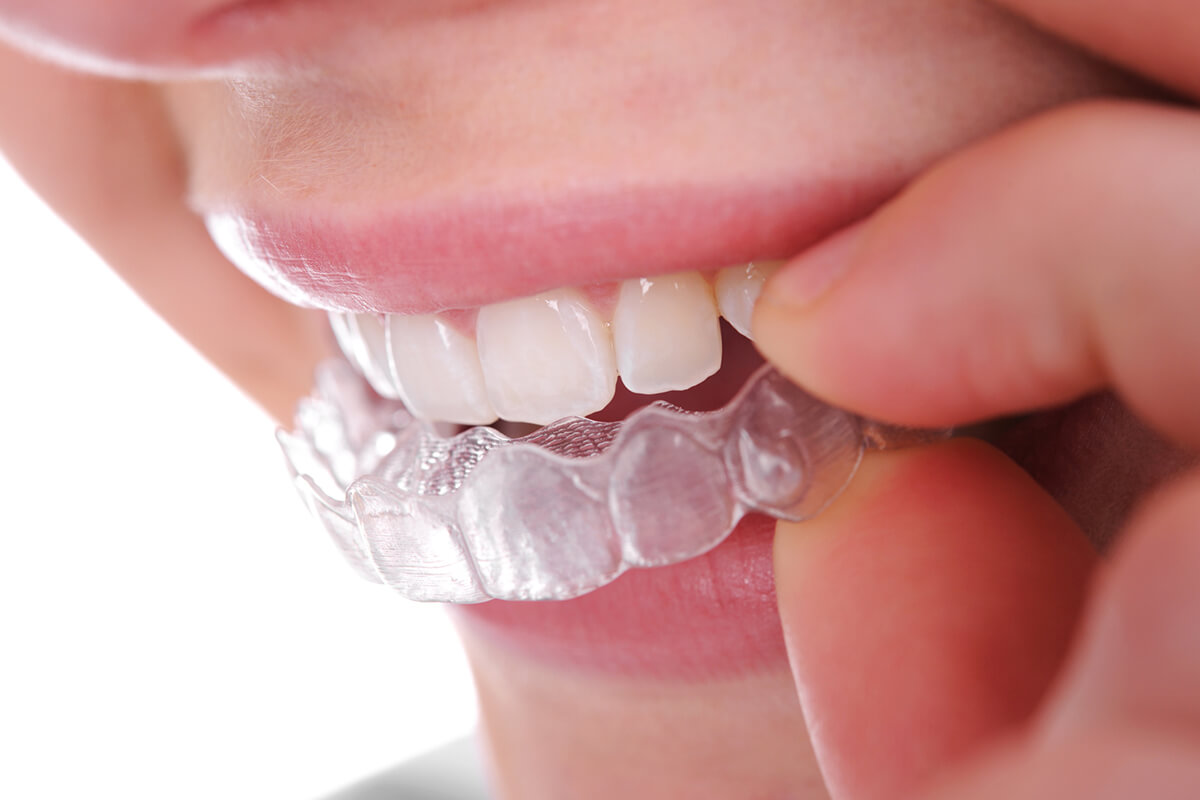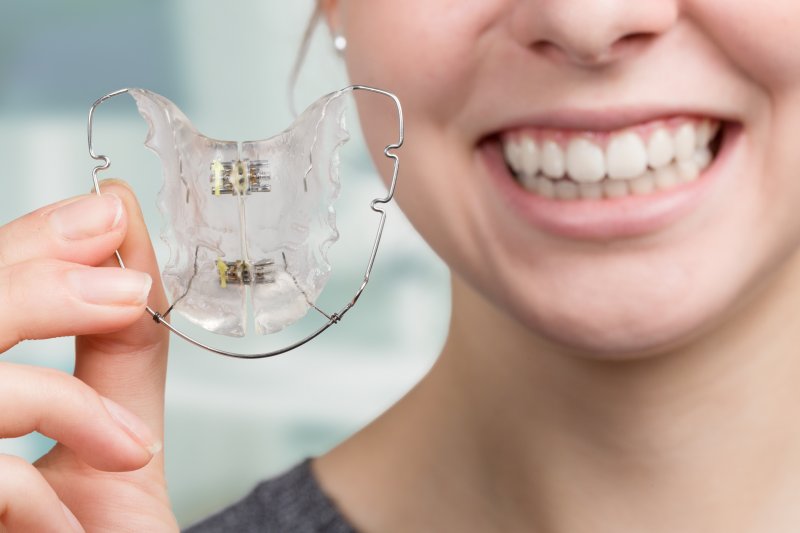Invisalign vs. Standard Dental braces: Which Option Is Right for You?
When thinking about orthodontic treatment, the option between Invisalign and conventional dental braces provides several vital factors that warrant careful analysis. Invisalign offers a very discreet choice with detachable aligners, while standard braces offer a more visible yet efficient remedy for severe imbalance. Each alternative encompasses distinctive advantages and drawbacks associated with appearances, comfort, treatment duration, and expense. Recognizing these subtleties is crucial for making a notified decision that aligns with your individual preferences and way of life. The inquiry continues to be: which choice will ideal fulfill your orthodontic requirements and expectations?
Introduction of Therapy Options

On the other hand, typical dental braces contain metal braces and wires that are adhered to the teeth. This method uses constant stress with time to accomplish placement. While reliable for intricate orthodontic issues, conventional braces need regular visits for modifications and can posture obstacles in keeping oral hygiene because of the difficulty of cleaning around brackets and cords.
Both choices have their values, and the choice commonly depends upon particular dental conditions, way of life choices, and person conformity. Inevitably, getting in touch with an orthodontic specialist is essential for figuring out one of the most suitable therapy strategy customized to specific demands. Recognizing the nuances of each alternative can dramatically affect the general success of orthodontic treatment.
Aesthetic Factors To Consider
A considerable aspect influencing the choice between Invisalign and conventional dental braces is the visual charm each therapy provides. Invisalign aligners are crafted from clear plastic, making them virtually undetectable when put on. This discreet look is specifically interesting adults and teenagers who may feel awkward concerning their orthodontic therapy. The capability to maintain an all-natural smile throughout the alignment process can dramatically improve the individual's confidence in social and specialist setups.
In comparison, traditional braces include steel braces and cables, which can be much more noticeable. While improvements in orthodontic technology have resulted in the advancement of smaller brackets and colored elastics, traditional braces still keep a more noticeable profile. For some individuals, the presence of braces might deter them from seeking needed therapy.
Ultimately, the choice between Invisalign and typical braces might depend upon personal choices pertaining to appearances. Patients who prioritize discernment typically favor Invisalign, while those that are much less worried regarding exposure might choose for traditional dental braces. Recognizing the aesthetic effects of each choice is important for making a notified decision that aligns with one's way of living and preferences.
Convenience and Convenience

In terms of convenience, Invisalign aligners are detachable, making it possible for patients to enjoy their favored foods without limitation and maintain ideal oral health. my explanation Brushing and flossing are streamlined, as the aligners can be gotten throughout these routines, whereas conventional braces need mindful maneuvering around braces and wires.
Additionally, Invisalign's progressive system permits fewer orthodontic visits. Clients generally get numerous sets of aligners simultaneously, which can enhance the treatment process and decrease time invested in the orthodontist's chair. In contrast, typical braces necessitate normal modifications, making them much less convenient for those with hectic schedules. Invisalign. Overall, the convenience and comfort of Invisalign make it an enticing option for lots of people seeking orthodontic therapy.
Treatment Period and Efficiency
While both Invisalign and traditional braces are effective in correcting dental imbalances, the period of therapy can vary considerably in between both choices. Typically, Invisalign treatment can take anywhere from 12 to 18 months, relying on the intricacy of the situation. The clear aligners function by gradually shifting teeth right into their preferred placements, and regular follow-ups with an orthodontist help make sure development stays on course.
On the other hand, typical braces often require a longer commitment, normally ranging from 18 months to 3 years. This results from their set nature and using cables and braces, which can be much more reliable for complicated cases and serious misalignments (Invisalign). The therapy effectiveness of standard dental braces is well-documented, as they enable exact adjustments and better control over tooth activity
Eventually, the option between Invisalign and traditional dental braces might depend upon both the awaited therapy period and the specific dental concerns handy. Consulting with an orthodontist is important, as they can supply tailored recommendations based on specific requirements, making certain the selected method aligns with wanted end results and timeframes.
Expense Comparison and Insurance Policy Choices
Price plays a substantial function in the decision-making procedure for individuals taking into consideration orthodontic treatment, whether going with Invisalign or traditional dental braces. On standard, the cost of Invisalign arrays from $3,000 to $8,000, while typical company website braces normally cost in between $2,000 and $6,000. Factors influencing these prices consist of the complexity of the instance, the period of therapy, and geographical area.
Lots of oral insurance policy plans give partial protection for orthodontic treatments, however the specifics can differ extensively. Typically, traditional braces might be extra often covered by insurance policy plans contrasted to Invisalign, which some insurers categorize as an aesthetic treatment.
Furthermore, numerous orthodontic techniques offer adaptable payment strategies, making both therapy choices extra easily accessible. Clients ought to ask concerning potential financing choices and discounts for upfront settlements. Examining the overall price, consisting of insurance policy benefits and settlement strategies, is important for making an informed decision that aligns with both aesthetic choices and budget plan considerations.

Conclusion
In recap, the option in between Invisalign and typical braces depends upon multiple factors, including aesthetic preferences, comfort, therapy period, and expense. Invisalign provides a discreet, removable alternative that facilitates oral hygiene and dietary adaptability, while typical dental braces might be better for intricate dental problems and commonly come at a reduced rate factor. Eventually, examination with an orthodontist is important to examine private scenarios and establish the most ideal treatment choice for accomplishing optimal oral positioning.
When taking into consideration orthodontic treatment, the selection in between Invisalign and standard braces presents several essential aspects that merit cautious analysis.Contrasting Invisalign and conventional dental braces reveals distinctive treatment options for orthodontic correction.While both Invisalign and standard dental braces are reliable in dealing with dental misalignments, the duration of therapy can vary substantially between the two alternatives.Price plays a considerable role in the decision-making process for individuals thinking about orthodontic therapy, whether choosing for Invisalign or typical dental braces.In summary, the option in between Invisalign and traditional braces hinges on numerous variables, including visual preferences, convenience, treatment period, and price.
Comments on “The Ultimate Contrast: Invisalign vs. Traditional Dental braces for Grownups”